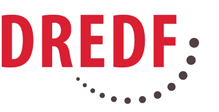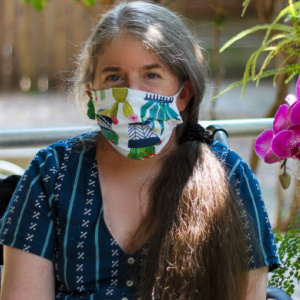Resource Library
Part one of a conversation with Ingrid Tischer, Founder and Director of the Disabled in Development Project.
Part one of a conversation with Ingrid Tischer, Founder and Director of the Disabled in Development Project.

Since 2011, anti-ableism advocacy and policy was my focus as the Development Director for the Disability Rights Education and Defense Fund (DREDF), a cross-disability national law and policy center. DREDF challenges disability discrimination through legal advocacy, training, education, and public policy and legislative development. Our work includes a focus on systemic ableism that manifests in tandem with other issues of oppression and violence such as racism. The last 10 years have included the most challenging grant-seeking of my 30-year career in predominately small grassroots nonprofits where disability issues were largely invisible.
In 2018, I became a Trustee of the Awesome Foundation Disability Chapter in part because doing so increased my social capital as a disabled fundraising professional. To help build cross-disability community in the sector, in 2019 I launched the Disabled in Development Project (DiD), a stigma-busting, story-telling outlet for disabled, chronically ill, and aging people who work in nonprofit fundraising and philanthropy.
Because of the need to dismantle the charity model (a harmful conception of disability that presumes disabled people are burden requiring charity to be fixed or cured) and the structural ableism within the sector itself, fundraising and its practices are about more than money for me. It’s personal. I grew up in the shadow of the Muscular Dystrophy Association’s Telethon that objectified disabled children and raises questions about consent in fundraising. I grew up seeing coin boxes in stores begging for pennies to fix the kind of little girl I was. So, my work has to be about community organizing and community development, whether the community is a neighborhood, a population, a foundation, or a sector. And because humor, imagination, and empathy are integral to not just surviving but thriving as an activist, I write about the emotional landscape of disability on my blog, Tales From the Crip.
I was invited to answer these questions well over a year ago and my approach to them has changed since I began. During that time, I became very ill, was hospitalized with pneumonia and diagnosed with severe depression, and achieved significant recovery in both. Finally dealing with my mental health issues and a medical leave gave me the time and distance to really consider the effects of prolonged exposure to the charity model on disabled people, including me. The charity model is a profoundly damaging way of understanding disability and regarding disabled people.
Much of what I do as a fundraiser is intended to be persuasive but I am going to instead describe, recommend, and raise questions more than I will try to prove that’s something is correct, whether through logic or statistics.
I’m aware that no matter how confidently I assert something about disability or ableism today, I’m still unlearning my own internalized ableism. So, I’m coming at this opportunity with intentional kindness and generosity, and strive to gratefully meet you wherever are you are on these issues.
Centering disability inclusion is one step toward grantmaking that better serves our society as a whole. When grantmakers don’t center disability inclusion, as they would other forms of inclusion, they diminish their moral authority, weakening agendas and impact. They and their work are lesser. It’s also problematic for grantmakers to hold other organizations to standards that they themselves may not be meeting or held accountable for.
To paraphrase the Haight-Ashbury Free Clinics where I learned fundraising on the job, disability inclusion is a right not a privilege, as are access and representation.
Nor is inclusion an investment. Investment is a transactional term that implies disabled people must prove our worth before efforts made to include us are justified. “Investability” politics sets comparatively privileged community members above those deemed lesser, reinforcing privilege and ableism.
Making our mere presence contingent on performance is not truly belonging and thus not true inclusion. Pushing back on the notion of investment has a side benefit of pushing back against transactional relationships, which is good for a philanthropy as a whole.
Disability inclusion is so important because it’s how you’ll bring the “starters” of varied disability cultures in to help grow a more robustly equitable philanthropic ecosystem that will in turn advance equity in our broader society. “Equitable” means greater resistance to the entwined structures of ableism, White supremacy, and income inequality that are so encoded in philanthropy’s DNA.
Disability inclusion begins with centering qualified disabled leaders and endowing them with enough power to withstand early-stage pressures that could push them out. These stressors include tokenism and expectations that they can “fix” the organization’s culture with regard to ableism. This is long-haul culture change work. It’s not a Disability 101 training or a series of trainings. It’s not a charismatic speaker who wows the board and then leaves. Disability inclusion is a tool, not the project itself.
As much as it pains me to say it, I regard philanthropy and grantmaking systems as being designed to discriminate through the charity model itself and the barriers still embedded in it. The question for me is, what would philanthropy and grantmaking look like without the ableism, White supremacy, and income inequality in its history, choices, and fundamental outlook? This is the type of transformational opportunity that disability inclusion could open the door to.
A first step is keeping the focus on ableism, including the ableism embedded in fundraising practices, because disabled people are frequently positioned as the problem that needs to be solved.
The second step is accepting that grantmakers must have the integrity to prioritize and fund anti-ableism work within their own foundations, and champion the efforts of others within the philanthropic sector, if they want to hold grantees and the world at large accountable.
The third step is accepting that you’ll be uncomfortable on a regular basis doing this kind of culture change work. It will help to anchor you if you remember you’re working toward accountability on a systems level.
For more insights on how philanthropy can move forward, continue on to part two of our conversation with Ingrid.

Ingrid Tischer (White, she/her) has been a Bay Area–based “accidental” fundraiser and non–profit manager for 30 years, beginning in a women’s free clinic on Haight Street. This early experience translated a lifetime of disability experience from the purely personal into the political, growth that was nurtured by the Black, brown, and queer leadership who encouraged her to train their clinical colleagues on the social model of disability. From 2011-2022, she served as the Development Director for Disability Rights Education and Defense Fund (DREDF), ensuring that fundraising practices and messages advance their values. She holds a Bachelor’s degree in Philosophy from The American University and is currently training for a coaching-for-liberation practice that focuses on disability, chronic illness, aging, and ableism.
Photo credit: Christopher Egusa